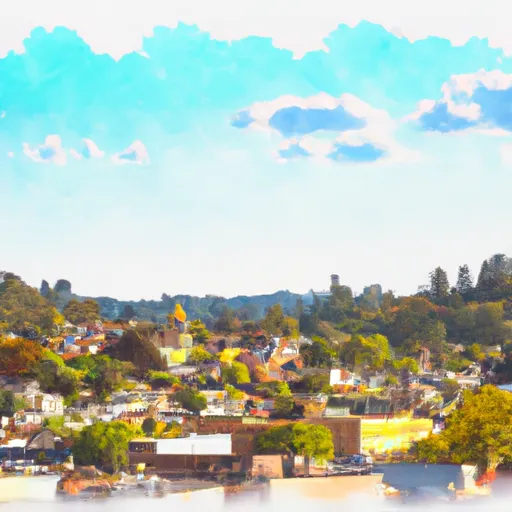-
 Snoflo Premium
Snoflo Premium
Get unlimited access to all our content
With no Ad interruptions! - Start Your Free Trial Login with existing account
Sonora
Eden Index
Climate
10.0
•
Recreation
7.8
•
Community
3.3
•
Safeguard
7.6/10

Sonora, California is a charming city located in Tuolumne County, which is situated in the Sierra Nevada foothills. The city experiences a Mediterranean climate, characterized by hot, dry summers and mild, wet winters. Summers in Sonora are typically sunny with temperatures ranging from the 80s to the low 100s°F, while winters are cooler, with temperatures ranging from the 40s to the 60s°F.
Hydrologically, Sonora benefits from the nearby Tuolumne River. This river, along with numerous streams and reservoirs in the area, provides ample water resources for the city and its surroundings. The region is also known for its beautiful lakes, such as Don Pedro Lake and New Melones Lake, offering opportunities for boating, fishing, and other water-based activities.
Outdoor enthusiasts can indulge in various recreational activities in Sonora. The nearby Stanislaus National Forest and Yosemite National Park offer extensive hiking trails, camping grounds, and opportunities for wildlife viewing. The area is also popular for fishing, horseback riding, and mountain biking. Additionally, Sonora hosts the Mother Lode Fairgrounds, where visitors can enjoy events like rodeos, festivals, and concerts. With its pleasant climate, abundant water resources, and diverse outdoor activities, Sonora, California is an ideal destination for nature lovers and adventurers alike.
What is the Eden Index?
The Snoflo Eden Index serves as a comprehensive rating system for regions, evaluating their desirability through a holistic assessment of climate health, outdoor recreation opportunities, and natural disaster risk, acknowledging the profound impact of these factors on livability and well-being.
Climate Health Indicator (CHI): 10.0
Sonora receives approximately
911mm of rain per year,
with humidity levels near 60%
and air temperatures averaging around
15°C.
Sonora has a plant hardyness factor of
9, meaning
plants and agriculture in this region tend to thrive here all year round.
By considering the ideal temperature range, reliable water supplies, clean air, and stable seasonal rain or snowpacks, the Climate Health Indicator (CHI) underscores the significance of a healthy climate as the foundation for quality living.
A healthy climate is paramount for ensuring a high quality of life and livability in a region, fostering both physical well-being and environmental harmony. This can be characterized by ideal temperatures, reliable access to water supplies, clean air, and consistent seasonal rain or snowpacks.
Weather Forecast
Streamflow Conditions
San Joaquin
Area Rivers
San Joaquin
Snowpack Depths
San Joaquin
Reservoir Storage Capacity
San Joaquin
Groundwater Levels
Recreational Opportunity Index (ROI): 7.8
The Recreational Opportunity Index (ROI) recognizes the value of outdoor recreational options, such as parks, hiking trails, camping sites, and fishing spots, while acknowledging that climate plays a pivotal role in ensuring the comfort and consistency of these experiences.
Access to outdoor recreational opportunities, encompassing activities such as parks, hiking, camping, and fishing, is crucial for overall well-being, and the climate plays a pivotal role in enabling and enhancing these experiences, ensuring that individuals can engage in nature-based activities comfortably and consistently.
Camping Areas
| Campground | Campsites | Reservations | Toilets | Showers | Elevation |
|---|---|---|---|---|---|
| Acorn - Tuttletown Area - New Melones Lake | 69 | 1,050 ft | |||
| Frogtown RV Park | None | 1,544 ft | |||
| Sand Bar Flat | 10 | 2,846 ft | |||
| Big Oak - Glory Hole Area - New Melones Lake | 55 | 1,050 ft | |||
| Wa Ka Luu Hep Yoo | 52 | 4,077 ft | |||
| Chamise - Tuttletown Area - New Melones Lake | 36 | 1,089 ft | |||
| Calaveras Big Trees State Park | 129 | 4,485 ft | |||
| Boards Crossing | 10 | 3,960 ft | |||
| Gloryhole Rec Area- Ironhorse - USBR | 300 | 1,172 ft | |||
| Manzanita - Tuttletown Area - New Melones Lake | 60 | 1,179 ft |
Nearby Fishing
Nearby Ski Areas
Catastrophe Safeguard Index (CSI):
The Catastrophe Safeguard Index (CSI) recognizes that natural disaster risk, encompassing floods, fires, hurricanes, and tornadoes, can drastically affect safety and the overall appeal of an area.
The level of natural disaster risk in a region significantly affects safety and the overall livability, with climate change amplifying these risks by potentially increasing the frequency and intensity of events like floods, fires, hurricanes, and tornadoes, thereby posing substantial challenges to community resilience and well-being.
Community Resilience Indicator (CRI): 3.3
The Community Resilience Indicator (CRI) recognizes that education, healthcare, and socioeconomics are crucial to the well-being of a region. The CRI acknowledges the profound impact of these elements on residents' overall quality of life. By evaluating educational resources, healthcare accessibility, and economic inclusivity, the index captures the essential aspects that contribute to a thriving community, fostering resident satisfaction, equity, and social cohesion.

